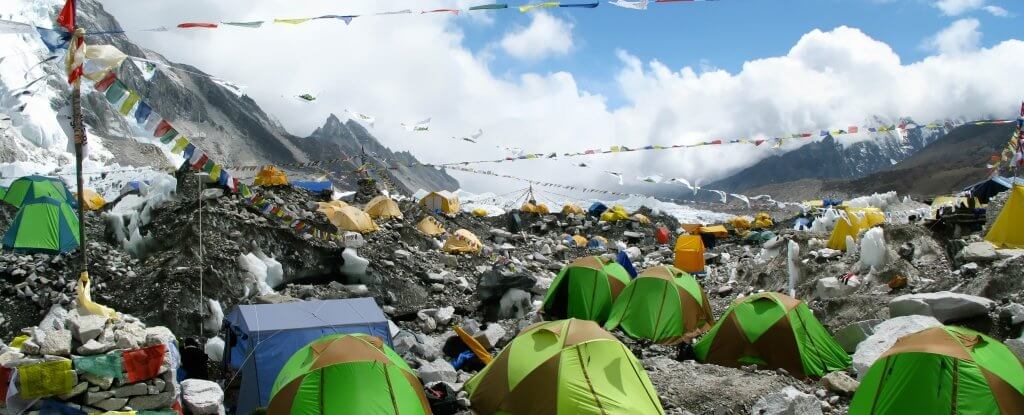
rmnunes/iStock
The world's highest mountain has turned into the world's highest-altitude rubbish dump in the last few decades, thanks to wealthy tourists that mindlessly leave a trail of awful refuse in their wake.
Since explorer Sir Edmund Hillary reached the 8,848-metre (29,029-foot) peak of Everest - also known as Chomolungma in Tibet and Sagarmatha in Nepal - in 1953, thousands of more thrill-seekers have attempted the trek. However, what goes up obviously does not always come back down, which leads to tons of trash littering the beautiful mountain's slopes.
When tourists pack up their rather easily accessible camps, they usually leave behind tents, empty gas canisters, broken climbing equipment, and a whole lot of excrement.
"It is disgusting, an eyesore," Pemba Dorje Sherpa told AFP. "The mountain is carrying tonnes of waste."
Both Tibet and Nepal have implemented systems to try to encourage climbers to bring down their waste. Tibet fines climbers US$100 per kilogram they leave behind, and Nepal charges a $4,000 deposit per team that is refunded if each member brings down 8 kilograms (18 pounds) of rubbish at least.
On the Nepal side, this led to climbers returning 25 tonnes of trash and 15 tonnes of excrement. However, that is just a small portion of the litter on the slopes. The major problem is that many tourists that are already spending up to $100,000 for the trek do not care about the deposit.
According to a 2016 report, local Sherpas remove 11,793 kg (26,000 pounds) of human feces from the mountain each season, dumping it in trenches in a nearby village. That becomes a festering pit of putrid grossness the locals have to live with: during the monsoon season, it gets flushed downhill into their river.
Several people are looking for a solution to these issues. Engineers are seeking to convert the waste pits into a some kind of biogas plant to convert the waste into renewable fuel, and local groups are working to clean up the mountain.
China's Everest cleanup brought down 8.5 tonnes of waste between April and June of 2018, and the Sagarmatha Pollution Control Committee has been in operation on the Nepal side since 1991, implementing programs to keep the mountain clean.
The best course of action would be for humans to take responsibility for themselves, but apparently, that's too much to ask.
Reference: Science Alert













I have read through other blogs, but they are cumbersome and confusing more than your post. I hope you continue to have such quality articles to share with everyone! I believe a lot of people will be surprised to read this article!
ReplyDeletewings io